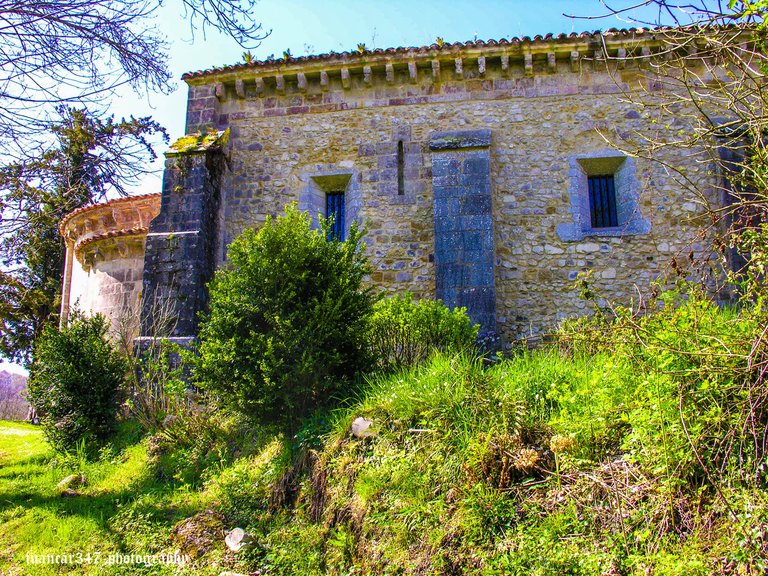
Neighbouring the emblematic Asturian town, which is, without a doubt, Cangas de Onís, the capital of the first Asturian monarchies and separated by the immemorial passage of the waters of a legendary river, the Sella, which every year in August receives thousands of visitors to enjoy the famous descent in the popular Canoe Festival, the small town of Villanueva preserves one of the most impressive Romanesque monasteries in the Principality of Asturias: the monastery of Saint Peter.
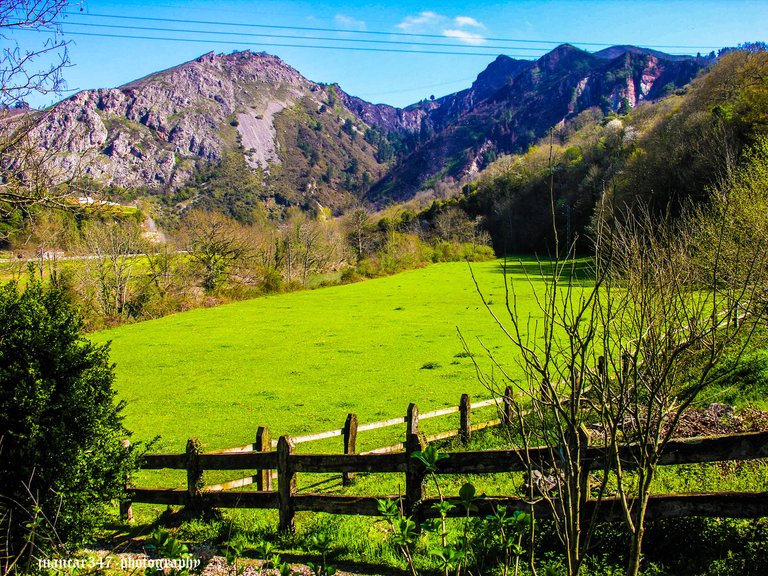
Although the original cloister was lost, probably in the 16th or 17th centuries - some Romanesque fragments remain, however - and was replaced by another, Baroque one, which is currently part of the premises of the National Parador of Cangas de Onís, the adjacent church maintains its structure more or less intact and, above all, the enigmatic sculptures that make up the capitals, the corbels and the metopes, which contain, however, a whole range of formidable medieval stories and myths, are in an invaluable state of conservation.
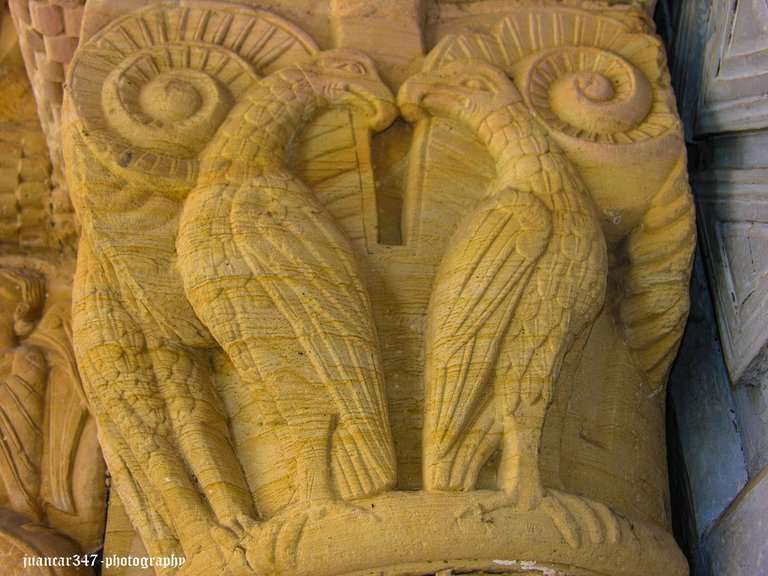
Within the extensive theme of these sculptures, including those of an erotic nature, one stands out in particular, which, although it cannot be considered an Oopart, properly speaking, or what is the same, an object out of its time, does seem to represent, however, something evidently unusual, and which, given its great similarity, could be taken, without much doubt, as the wheel of one of those tractors that all farmers already know well.
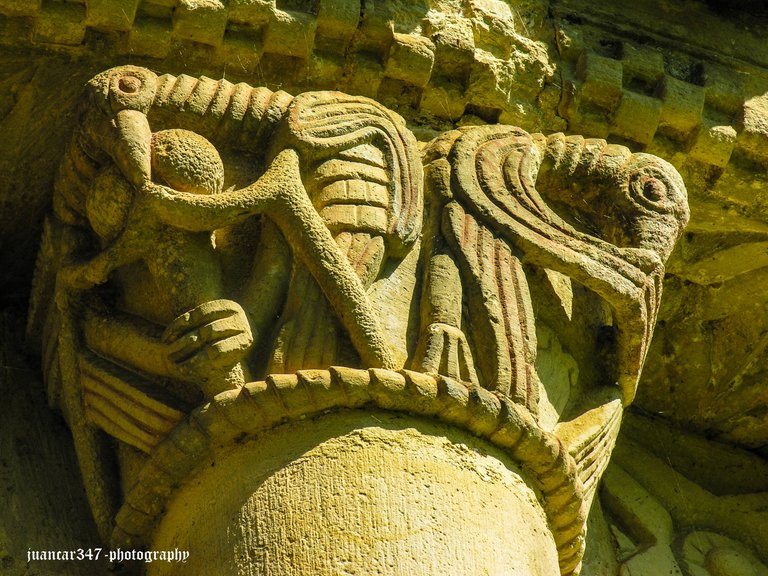
Vecino de la emblemático población astur, que es, no cabe duda, Cangas de Onís, esa capitalidad de las primeras monarquías asturianas y separado por el paso inmemorial de las aguas de un río legendario, el Sella, que todos los años en agosto recibe a millares de visitantes para disfrutar con el famoso descenso en la popular Fiesta de las Piragüas, la pequeña población de Villanueva conserva uno de los monasterios románicos más impresionantes del Principado de Asturias: el monasterio de San Pedro.
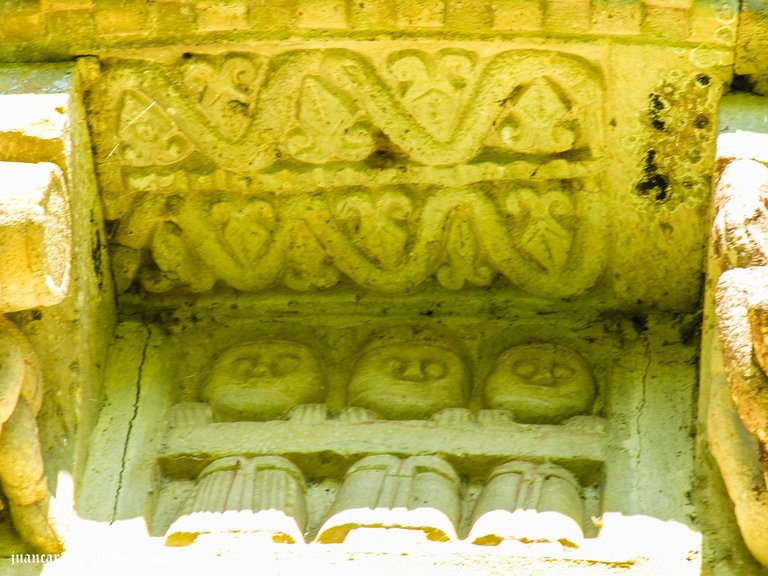
Si bien, el claustro original se perdió, probablemente en los siglos XVI o XVII -quedan, a pesar de todo, algunos fragmentos románicos- siendo sustituido por otro, barroco y que en la actualidad forma parte de las dependencias del Parador Nacional de Cangas de Onís, la iglesia, aledaña, mantiene más o menos intacta su estructura y sobre todo, en un inestimable estado de conservación las enigmáticas esculturas que conforman los capiteles, los canecillos y las metopas, continentes, no obstante, de todo un elenco de formidables historias y mitos medievales.
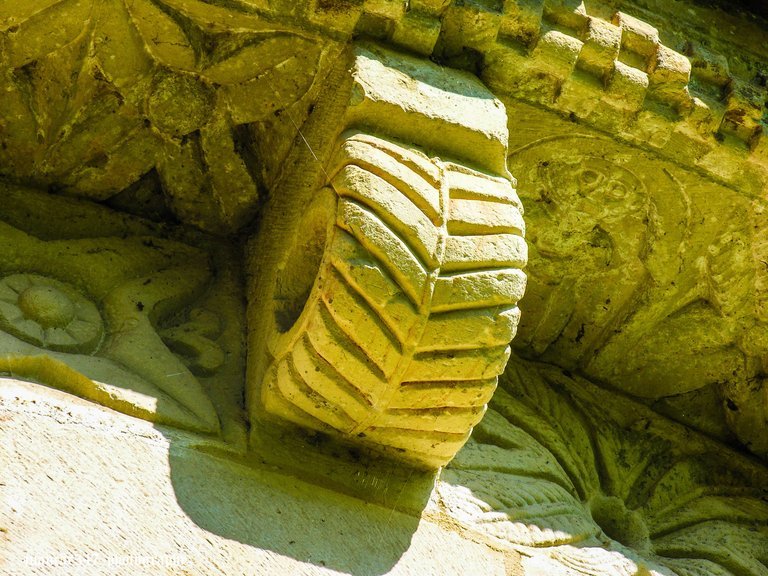
Dentro de la extensa temática de dichas esculturas, incluidas aquellas de carácter erótico, destaca una, en particular, que, si bien no puede considerarse un Oopart, propiamente dicho o lo que es lo mismo, un objeto fuera de su tiempo, sí que parece representar, sin embargo, algo evidentemente inusual, y que, dado su gran parecido, podría tomarse, sin muchas dudas, como la rueda de uno de esos tractores que bien conocen ya todos los agricultores.
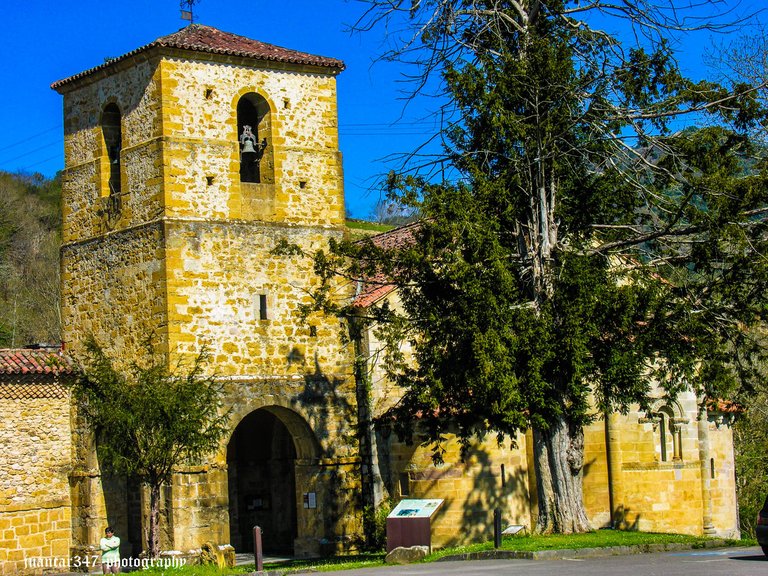
NOTICE: Both the text and the accompanying photographs are my exclusive intellectual property and are therefore subject to my Copyright.
AVISO: Tanto el texto, como las fotografías que lo acompañan, son de mi exclusiva propiedad intelectual y por lo tanto, están sujetos a mis Derechos de Autor.
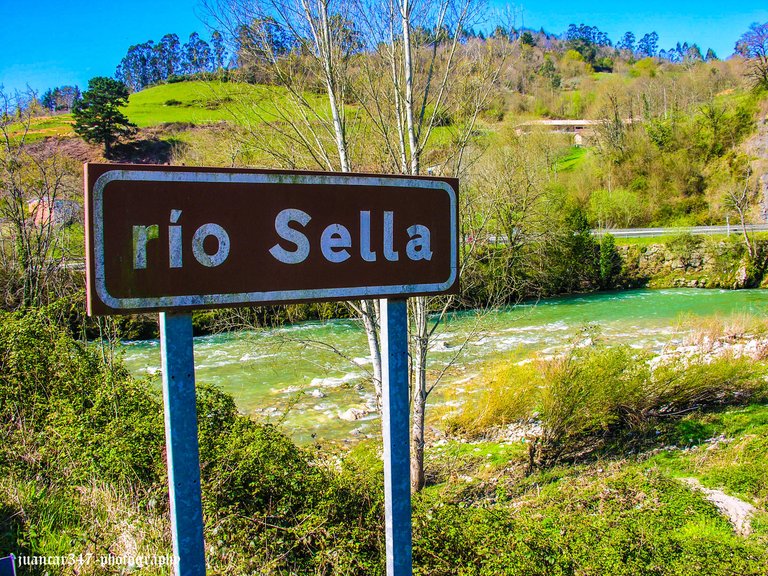
Awesome post! Hive is lucky to have creators like you.
Join Block Horse Racing and start racing your way to rewards!
Check your wallet, there’s a gift to get you started in the BHR-Game universe.
Let’s build something great together on Hive!
Thank-you very much
Hay que avisar a Giorgio Tsoukalos :-D
Source
Ja, ja, ja...si le invitas a unas sidrinas y luego le llevas a ver románico, seguro que ve aliens a punta pala.